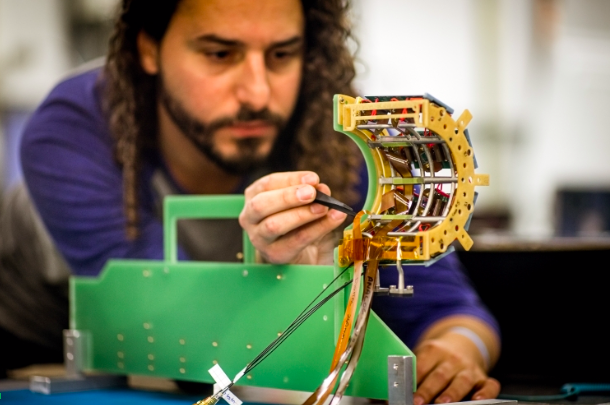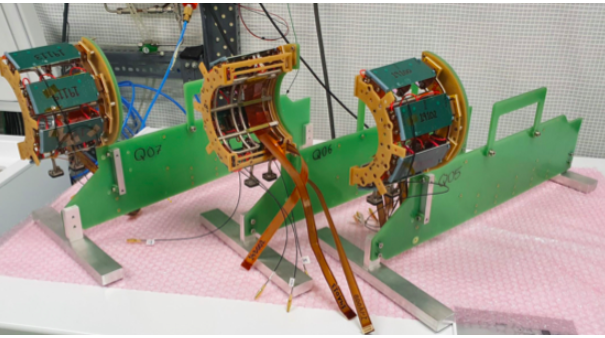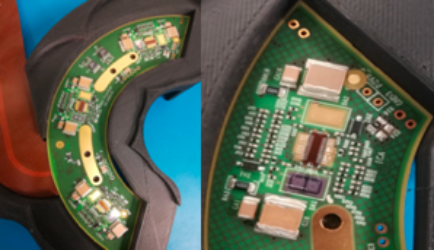Towards high-precision luminosity for CMS in Run 3 and beyond
Luminosity is a key parameter for any collider-based high energy physics experiment as it links the interaction rates observed in an experiment to the cross sections of physics processes. Therefore, it is a key ingredient to most major analyses performed at an experiment and the uncertainty on the luminosity measurement is often a major contribution to the total uncertainty. Luminosity is also used by the LHC operators to optimise the beam conditions for data taking in all LHC experiments and by the experiments to set for example the prescales in the trigger menu. This measurement is commonly referred to as “online luminosity”, as it has to be provided to the LHC in almost real-time whereas the luminosity measurement used for physics analyses is the result of tedious calibration work performed by luminosity experts, containing a number of corrections to the online measurement. These corrections include improvement in the absolute luminosity calibration, by careful inclusion of all corrections needed in the van der Meer scan measurement technique, used to extract the luminosity calibration, and also corrections for detector effects of non-linearity as a function of single bunch instantaneous luminosity (proportional to pileup), corrections to out-of-time effects and corrections to any inefficiencies measured during the full data taking period.
In CMS, measuring the luminosity falls under the responsibility of the Beam Radiation Instrumentation and Luminosity project (BRIL), which operates a set of dedicated detector systems for this purpose. These detectors are optimised to measure luminosity and monitor beam conditions. Having multiple of these systems not only provides redundancy (the LHC control room requires to have a good number at all times) but also allows to track system stability and flag sudden changes in detector efficiency. As the luminosity measurement boils down to “counting” an observable that is proportional to luminosity, only multiple, redundant measurements allow to judge if a sudden change in count rate is due to a detector effect or an actual change in beam conditions.

Figure 1: Andres Delannoy is shown working on one of the four cassettes of the Pixel Luminosity Telescope (PLT), one of the luminometers that the BRIL project is rebuilding in preparation for Run 3 (Credits: CMS Collaboration).
In the presently ongoing Long Shutdown 2 of the LHC, the BRIL project is working to replace and upgrade two of the backbones of the luminosity system in CMS, namely the Pixel Luminosity Telescope (PLT) and the Fast Beam Conditions Monitor (BCM1F) with the goal of improving performance for Run 3 which is scheduled to start in May 2021. These two systems are mounted on a common support structure and installed behind the Forward Pixel Detector in the very heart of CMS where the radiation environment is particularly unforgiving and thus components can suffer from radiation degradation.

Figure 2: Photo of the PLT rebuild, ongoing in the BRIL lab in building 186 during LS2. Three of the four quadrants have been assembled so far. It is foreseen to build in total eight such quadrants, so that two complete PLT detectors are available for installation during Run 3. (Credits: A. Delannoy, CMS Collaboration).
In order to maintain top performance throughout Run 3, two new, exact copies of the Run 2 PLT are currently being built from spare parts at CERN, steered by the leadership of two BRIL institutes; the University of Tennessee and Rutgers University. “If the new PLT deteriorates faster than we anticipated, or the Run 3 program is extended to accumulate a larger than expected integrated luminosity, we can replace it very easily since we have a second copy” says Andrés Delannoy, who is overseeing the PLT replacement. Three of a total of eight quadrants have already been constructed, with the rest anticipated in the upcoming months.

Figure 3: The CMS prototype LS2 BCM1F-silicon detector at CERN. The production of final boards is ongoing in the CERN Micro-Pattern-Technology (MTP)-workshop (Credit: CMS Collaboration).
On the other hand, the BCM1F detector is undergoing an evolution and some design improvements. The Run 2 version of this detector was based on a mix of primarily polycrystalline diamond- and some silicon sensors. Operations over the last few years indicated that the silicon-equipped channels showed overall better performance and stability. Therefore the new detector will be based entirely on novel, AC-coupled silicon-pad detectors made from very radiation-tolerant material that was chosen for the upgrade of the CMS Tracker in the High Luminosity LHC - it is the first time that these materials will be installed in CMS. The new Fast Beam Conditions Monitor will also be equipped with active cooling to ensure longevity and performance throughout the entire Run 3. The necessary R&D and engineering work for this evolutionary design improvement is shared mainly among DESY and the BRIL group in the EP-CMX group at CERN, with engineering support from CERN’s EP-DT group and the CERN Micro-Pattern-Technology (MTP)-workshop. While the first prototype boards have been produced and tested at CERN with very promising results, the final production is currently underway and will be equipped with components and sensors later in spring for a final checkout and integration with the PLT on a common mechanical structure in the Fall of 2020.
Other activities to improve the luminosity measurement in Run 3 and beyond are ongoing in parallel. The first is implementing the so-called ‘Pixel Cluster Counting’ (PCC) workflow - so far an offline analysis - to the high level trigger of CMS, for a quasi-online availability of the data at a potentially higher trigger rate. The second is an exploitation of the CMS Trigger Scouting demonstrator system to provide a count of the muons reconstructed by the Level 1 trigger as an additional real-time measurement with bunch-by-bunch data.
These two LS2 developments are considered important stepping stones towards the Phase 2 Upgrade of CMS for the High Luminosity LHC era where a variety of CMS subsystems will provide data for luminosity measurement via dedicated data paths to ensure availability and redundancy. Most notably, a real-time implementation of Pixel Cluster Counting in the forward extension of the Inner Tracker with a dedicated luminosity processing back-end will form the backbone of the BRIL strategy and thus gaining experience with PCC in the HLT is extremely valuable to develop algorithms and correction strategies. “The target precision for luminosity in Phase 2 will be 1 per-cent which is extremely difficult to achieve and requires input from many systems with ideally orthogonal systematics and excellent statistical precision” says Anne Dabrowski, co-manager of the BRIL project. To meet these very demanding requirements, BRIL is also studying concepts for a dedicated, purpose-built luminometer. The project has recently published a CMS note titled “The Phase-2 Upgrade of the CMS Beam Radiation, Instrumentation, and Luminosity Detectors: Conceptual Design”[1], outlining the luminosity strategy and instrumentation options fo HL-LHC that will be further developed for the BRIL Technical Design Report to be submitted in the second quarter of 2021.
Further Reading
[1] https://cds.cern.ch/record/002706512?ln=en
